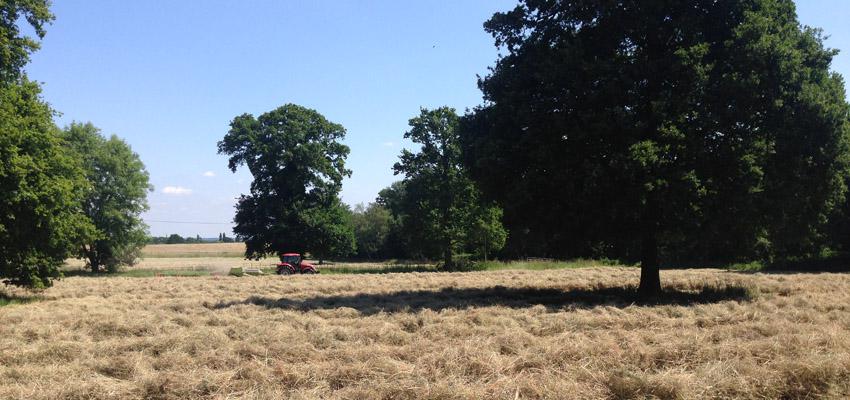
We are out on our tractors.
It's haymaking time, it's hot, it's very dusty and its all hands on deck.
We harvest at this time of year keeping a close eye on the weather.
We want a dry spell, so that we cut the hay and in the process pass it through rollers to crush the stems which helps it dry quicker.
Once the hay is cut we leave it on the ground and give it some time to dry.
The key thing with hay bales be they square or rolled is to ensure that they are not baled with a high moisture content.
So keeping an eye on the weather forecast, the humidity in the air, and the type of hay we are cutting all count towards the end quality.
If the hay bale has too much moisture it could turn to mould.
Then we 'ted" the hay. Nothing to do with cuddly toys or Rupert bear.
Tedding is the process of fluffing up and turning over the hay that was cut earlier and spreading it out in the fields so it drys. Depending on the weather conditions, we may do it the same day as cutting or the next day.
When we hook up the tedder behind the tractor we don't want to run it too fast so that it pulverises the hay, slower is better so it spreads it out to dry.
Once the hay has been tedded and is nearly dry, the next step is to rake it into what we call "windrows" from whence it will be baled.
Once again, when we are raking we take into account the moisture content and as a general rule, ensure that the morning dew has been burnt off by the sun and after raking we allow more time before baling for extra drying.
